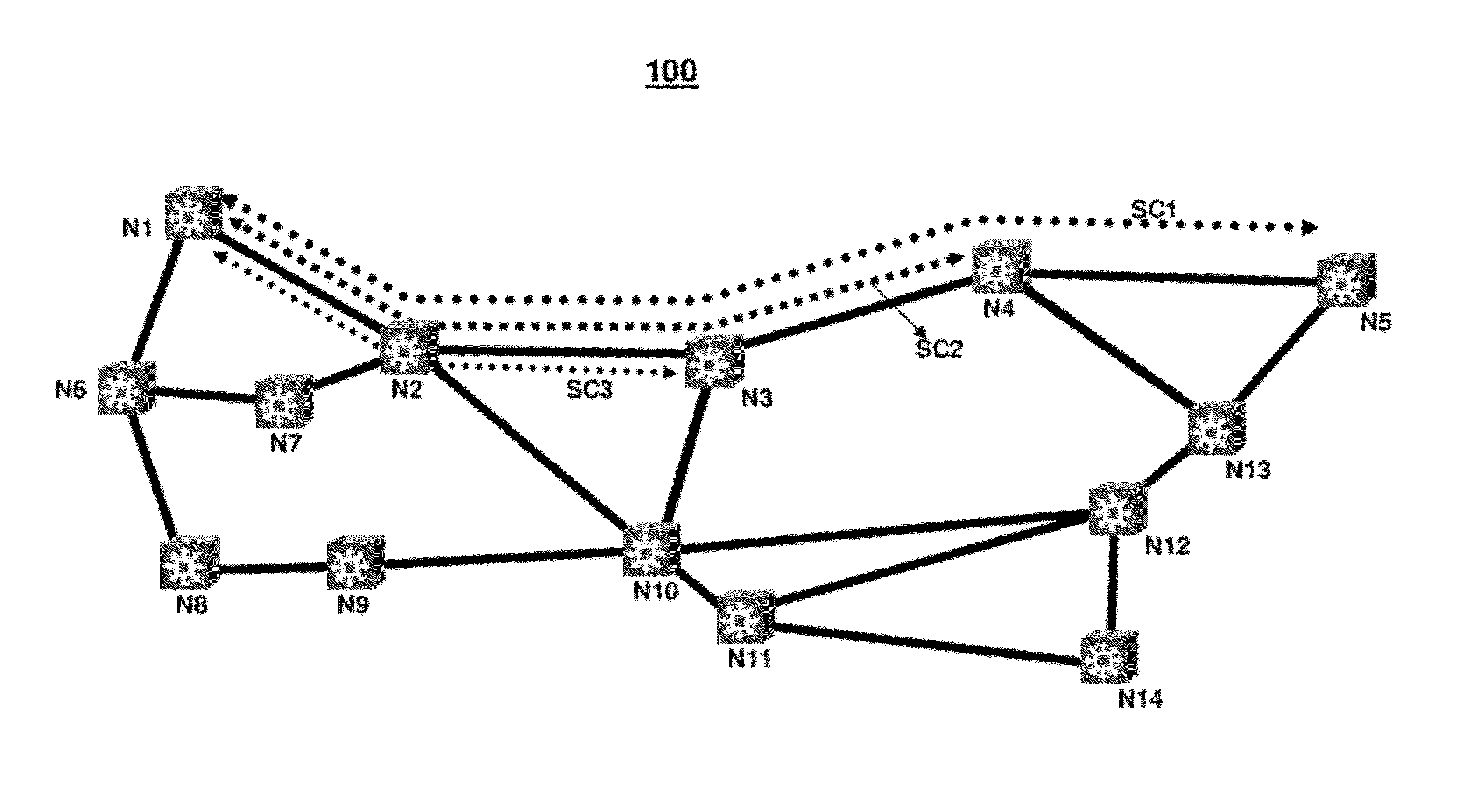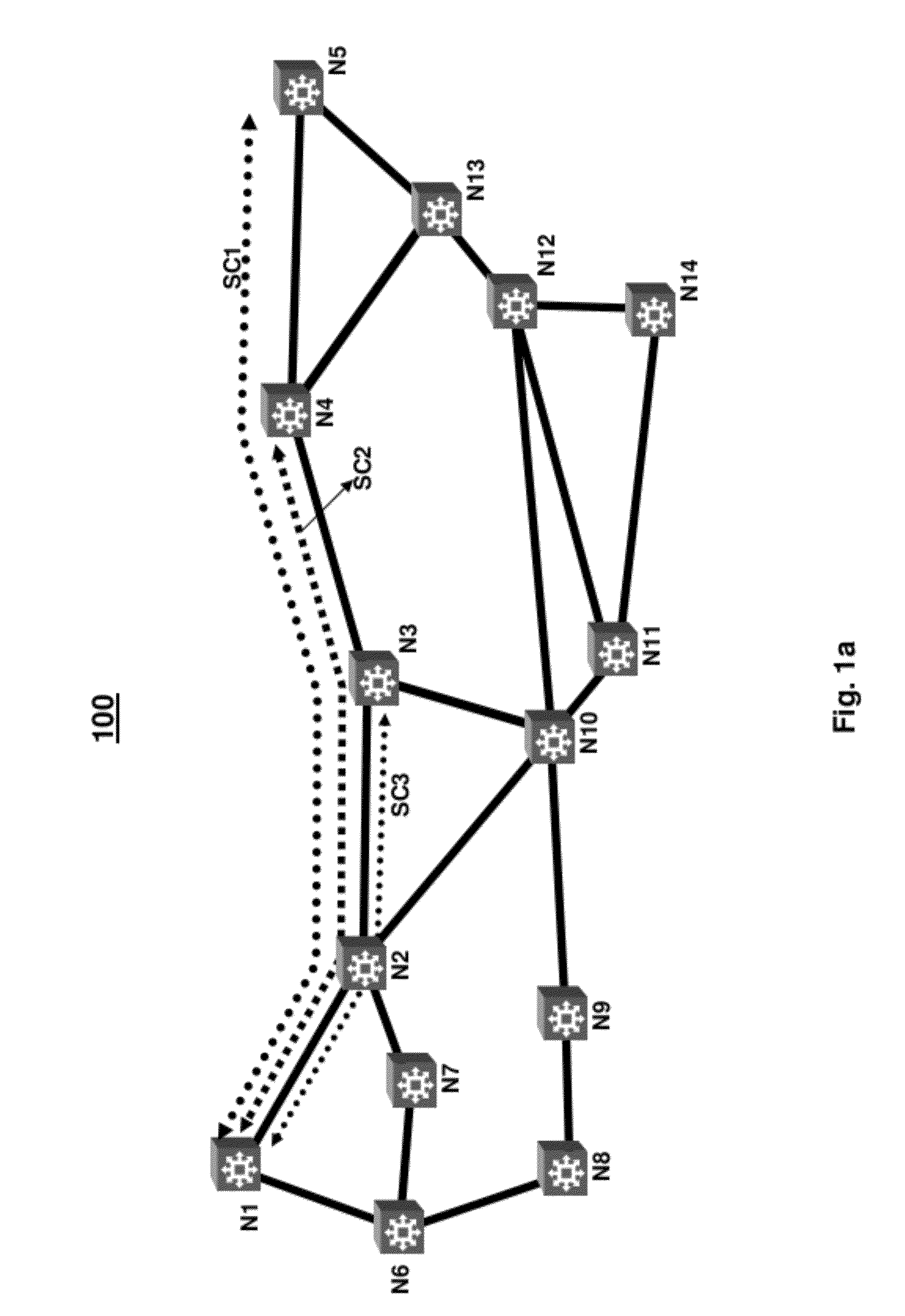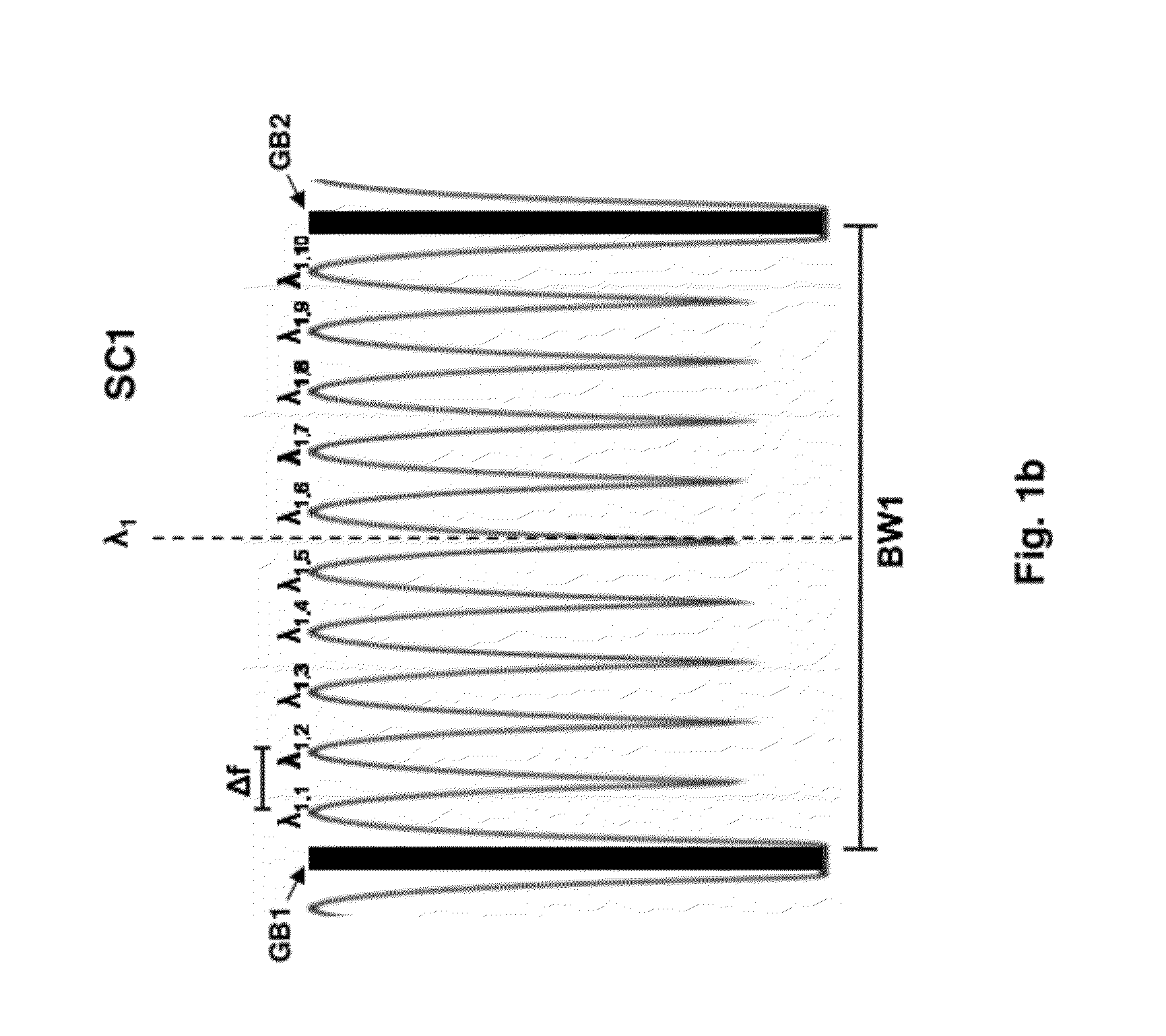Apparatus to Control Carrier Spacing in a Multi-Carrier Optical Transmitter
- Summary
- Abstract
- Description
- Claims
- Application Information
AI Technical Summary
Benefits of technology
Problems solved by technology
Method used
Image
Examples
Embodiment Construction
[0025]Consistent with the present disclosure, data, in digital form, is received by a transmit node of an optical communication system. In response to the received data, a modulator modulates light output from a laser to provide a modulated optical signal. Typically, a plurality of such modulators and lasers are provided, and each of the corresponding modulated optical signals or carriers has a respective one of a plurality of wavelengths. The wavelengths are spectrally spaced from one another in a uniform manner, and may thus be considered periodic. Preferably, the optical signals have wavelengths that are minimally spaced from one another, such that the optical signals collectively constitute a superchannel. In one example, a plurality of superchannels may be transmitted in an optical communication system.
[0026]In order to control the wavelength or frequency of each optical signal in the superchannel, optical signal frequencies or wavelengths may be locked or controlled relative t...
PUM
 Login to View More
Login to View More Abstract
Description
Claims
Application Information
 Login to View More
Login to View More - R&D
- Intellectual Property
- Life Sciences
- Materials
- Tech Scout
- Unparalleled Data Quality
- Higher Quality Content
- 60% Fewer Hallucinations
Browse by: Latest US Patents, China's latest patents, Technical Efficacy Thesaurus, Application Domain, Technology Topic, Popular Technical Reports.
© 2025 PatSnap. All rights reserved.Legal|Privacy policy|Modern Slavery Act Transparency Statement|Sitemap|About US| Contact US: help@patsnap.com



